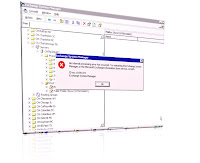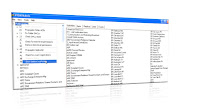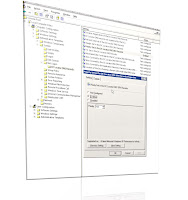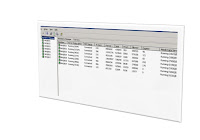
Exchange 2007 is for sure rock solid messaging application. The more I dive into it, I understand the exchange is trying to be the, the future SMTP mail relay gateway and the next generation messaging application. To be honest I must say, I am very impressed with all hard work have been done behind this great messaging application, Exchange 2007. In reality, most of the enterprise networks already using UNIX appliance as their mail gateways. Where I work, we use IronPort as our mail gateways. We had some other vendor over years and replaced recently those appliances to IronPort mail gateways. I have not logged into IronPort since we deployed them. Why because I did not need too, it has been working solid and incredible performance, where a million e-mails hits our gateways in 1 HR time interval.
It is going to be very hard for exchange to replace some of these, appliance in the near future as mail gateways, since UNIX has its own reputation over years and working rock solid.
The design of exchange 2007 seems to be covering all bases, as these UNIX appliances in the market. Why Exchange never to be considered as mail relay gateway in the past. If you try to install exchange 2003 on windows and try to place in DMZ most likely, you would lose your job, since this would not be a secure implementation.
First reason is windows operation system; unfortunately, it is not as secure as UNIX, yet. Secondly, the primary protocol for Exchange 2003, SMTP is part of IIS (SMTP Stack). Installing IIS on top of none secure OS, could bring great chance of being hacked.
Now what has changed? With Exchange 2007
The SMTP stack is the core infrastructure of Exchange. Without it, we cannot send and receive e-mail messages. Microsoft rewrote the SMTP Transport Stack and start running as the Network Service account. This reduced the risks that are associated with denial of service attacks. Of course, this eliminated the dependency on IIS and reduced the risk of being hacked for DMZ type of deployment.
The Microsoft Exchange Transport Service
For small companies who do not have money-getting exchange 2007 seems to be the way to go. For large enterprise, networks will implement exchange 2007 in other roles and take advantage of the great messaging application. I hope new Edge role is going to be used in the future as well. Microsoft Server OS has done great improvement and getting much better in my opinion. Smart shell (power Shell) , being able to turn the GUI off on the DMZ type of implementation and taking advantage from Shell (Using SSH perhaps) will bring the Microsoft Server OS to a quality level as others out there in the very near future.
Best Regards,
Oz ozugurlu,









